Sun, wind, biomass, tides, waves and geothermal heat: the earth is its own powerhouse of energy and is in perpetual, plentiful supply. We have to unlock the full potential of renewable technologies by investing in their unlimited capacity to produce hydrogen so they can be used in abundance.
Limiting global warming to 1.5 degrees Celsius will require a dramatic increase in the use of renewable electricity, 23% in 2015 of energy used to 68% in 2050 according to the IEA. Nearly every country has agreed to take major steps to increase their renewable electricity share, which will mean massive change for the 2.9 billion people still relying on wood, coal and charcoal for cooking and heating homes. Or the one billion people still lacking access to electricity, while a further one billion have an unreliable supply. Increasing adoption of renewables will lead to cleaner air, new employment opportunities and better access to clean energy for millions of people.
Traditional fossil-fuel plants provide a consistent and predictable amount of electricity. Without a doubt, the biggest problem with renewable energy is that it is not as reliable:
Hydrogen is one of the technologies to help with storage:
Renewable energy can be used to power the electrolysis of water, a chemical reaction that stores renewable energy by transforming it into hydrogen. The hydrogen can then be used at a time and place where its power is required.
Important synergies exist between hydrogen and renewable energy and can broaden the reach of renewable solutions.
IRENA 2019 Tweet

Imagine your local supermarket has installed solar panels and wind turbines at its distribution center.



Hydrogen can store large quantities of renewable energy for a long time.
Hydrogen can be transported over long distances – from regions with abundant solar and wind resources (like Australia) to energy-hungry cities thousands of kilometres away.
Stored hydrogen can be used in many different ways. Hydrogen like electricity can also be used in as fuel for transport. Because it can provide heat at very high temperatures, it is also suited to power energy-intensive industries.
Renewable power will be able to provide the bulk of global power demand (86%) by 2050.